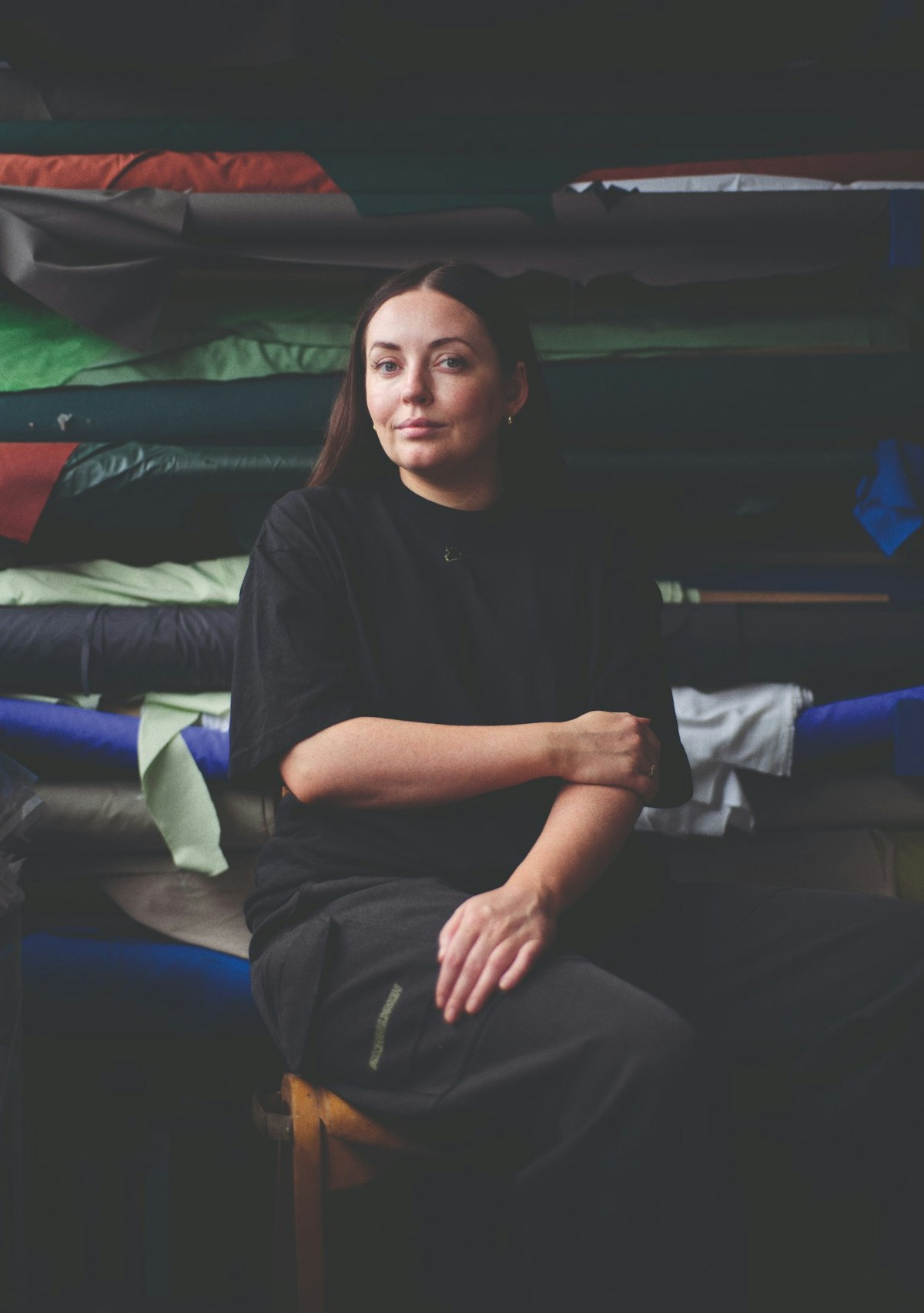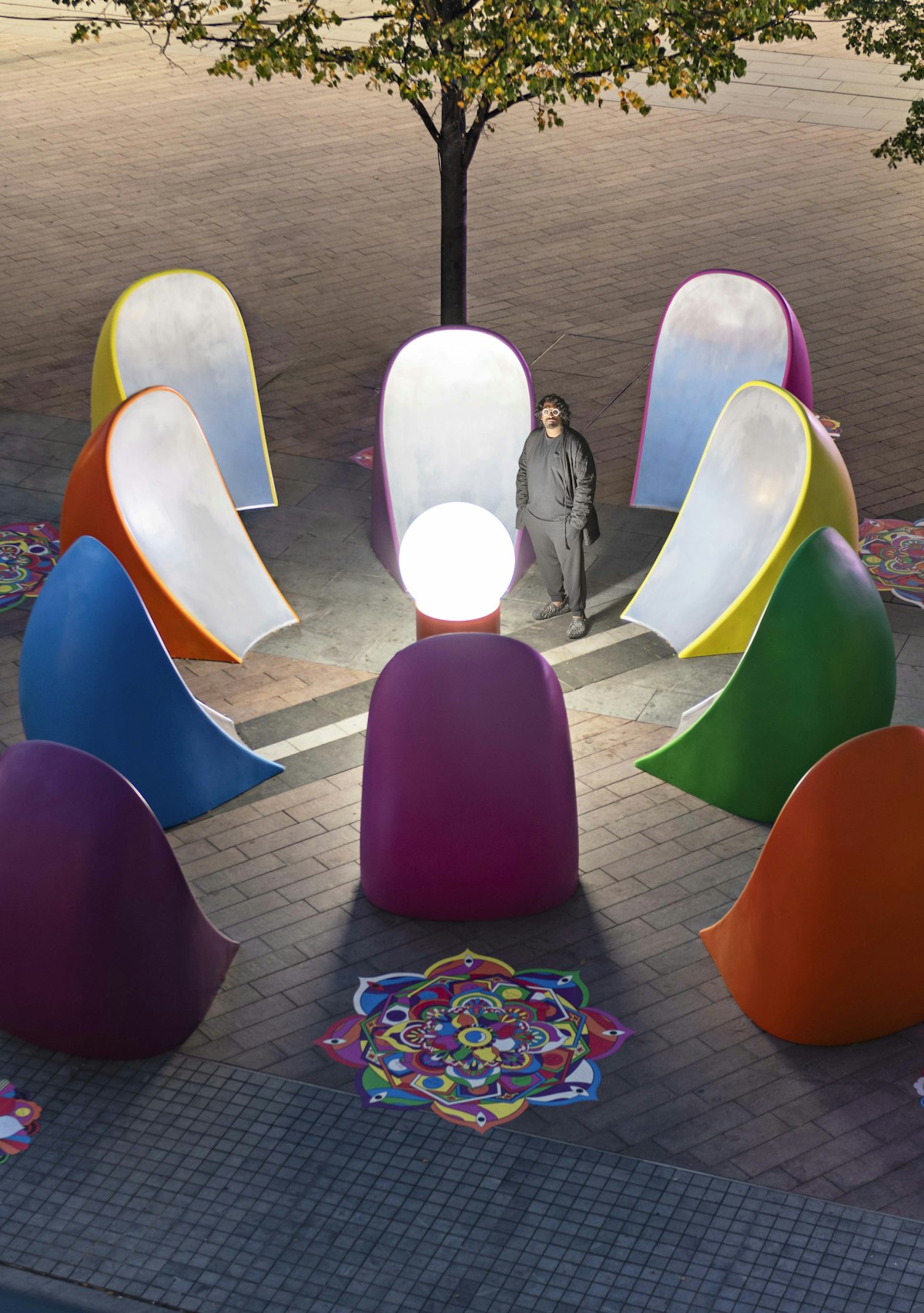
Home Affairs
Vivid and very cool, the NOW Gallery Summer show, “Home Affairs”, was centred on the art of storytelling through living. Furniture and product designer Yinka Ilori, fashion designer Christine Mhando, of Chichia London, and creative consultant Arieta Mujay devised theatrical, visually compelling conceptual spaces, brought to life with curated film, archival footage and performance.
Set against a backdrop of indigenous plants, designed objects, and brightly patterned garments, Ilori, an East London-based designer, created thought-provoking furniture using Mhando’s bespoke Khanga textiles. Text from traditional Nigerian and Swahili parables—powerful anecdotes that question local as well as global values and ideologies—framed four vivid living rooms, and each space revealed its underlying story.
Ilori—who has exhibited in London, New York, Germany and Milan—has a design approach that starts with the dismantling of the original components, which he then re-assembles into a new piece, ready for use again.
This practice stems from a deep awareness of the unnecessary waste prevalent in modern consumer societies—he happily accepts unwanted or damaged furniture to be saved, rehabilitated, and beautified for future use. A recent workshop at the Vitra Design Museum in Basel, for example, saw Ilori help participants to make old chairs shine with new splendour.
His work employs materials like colourful Dutch Wax fabrics, and also intangible elements, such as the traditional Yoruba parables he grew up with as the son of Nigerian immigrants in London. We spoke with him about up-cycling vintage furniture, and how his heritage influences his work.
Can you tell me about the origins of your creative practice?
I liked how I was brought up, so I make a real effort to put narrative and storytelling into my work. I had my first exhibition about a year out of university and incorporated African prints, inspired by my Yoruba culture. I think people really liked what I was trying to do, and it grew from there.
Early in my career, I remember being in my back garden designing a chair called Three’s a crowd. I recall thinking that this was going to work and it was going to be successful—I believed in what I was doing. I think once you believe in what you’re doing the rest will follow.
When did you first get interested in up-cycling?
My love for up-cycling came about around five years ago while I was at university. I undertook a project called RGM, which involved finding two objects and making them into one piece of furniture. It was inspired by the artist Martino Gamper, an Italian designer based in London.
What role do the traditional parables play in your work? Growing up, I found it quite hard to express my culture. Every Sunday my parents would wear their traditional outfits, even to the corner shop, because they were just so proud. I never understood it. What was it about our culture that they wanted to share with the world? My parents always told me parables whenever we misbehaved, they would never smack us. They were so powerful, and could make me really emotional.
One was called: ‘One should not throw stones if the other one wants to fly away.’ You shouldn’t judge people because they’re trying to express themselves or do something differently. Who are we to judge? Sometimes I find myself judging people, and I need to keep this lesson in mind. I try and tie this symbolism into my work too.
What do you hope viewers take away from your work?
People have always asked why I like to design chairs. I think, for me, an old chair holds a strong narrative because you don’t know who might have sat on it, you don’t know where it’s been, or the stories this furniture has absorbed. My work picks up these used objects and continues its narrative; someone who sees one of my chairs conjures their own story around it. For me, it creates a continuous, ever-evolving story that people can contribute to. I often go to design shows and find a lot of pieces that don’t have a narrative—and they don’t speak to me. But I’m the sort of person who likes to connect with things.
For my show last year in Nigeria, I had my work hanging on a bamboo structure that was attached to the wall and there were a few buyers who wanted to purchase the chairs. A woman told me she loved how the work was displayed in the exhibition space, and wanted me to install it in her house just as it was. I thought that was amazing. After she said that, I got flurry of people asking me to install chairs on their walls too. I think people just really want a story.







